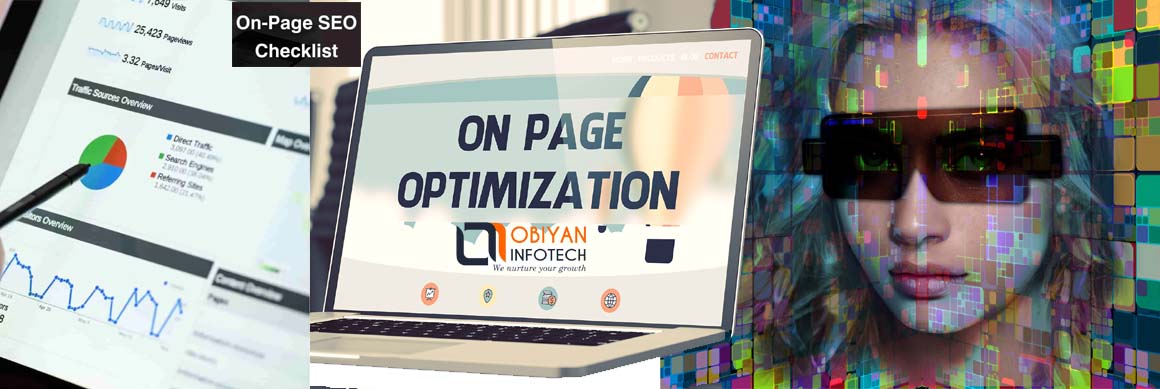
What Does OnPage SEO Mean?
How Do SEO Rankings Show Up in Search Results?
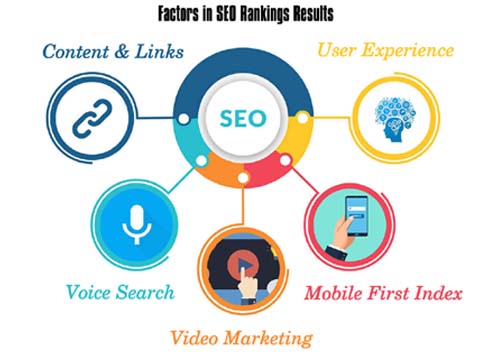
By Giving Visitors Smooth & Enjoyable Experience
Components of On-Page SEO Services?
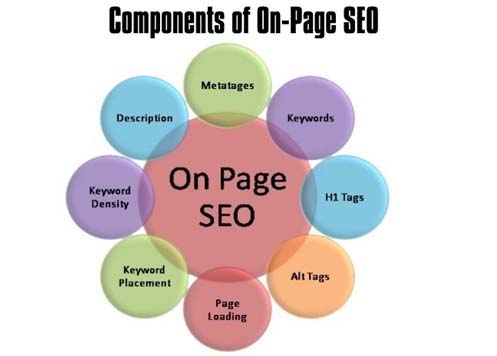
Meta Descriptions, Keyword-Rich Titles etc.
Read More
Overview of On-Page SEO Services
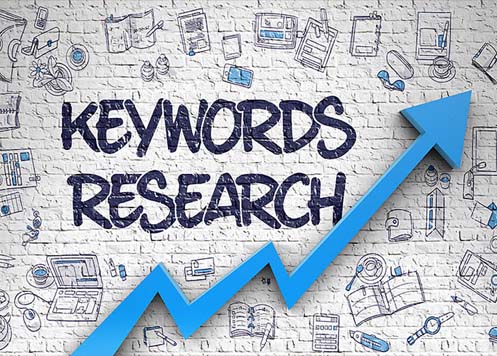
Keyword Research
Read More
Significance of Keyword Research in SEO
Importance of Keyword Research in SEO lies in the fact that…
– It lets you get inside the heads of your audience and see what they’re searching for. We come to know the search behaviour of the audience.
– It gives you a sneak peek (insights) at what your competitors might be missing, showing you where you can shine i.e. keyword-gaps.
– It guides you to tailor your website’s content so it answers people’s search queries spot on.
– And the cherry on top? It improves website’s ranking in search engine results pages (SERPs), making sure more people see you.
How Do We Conduct Keyword Research?
The steps for keyword research are as follows:
– First off, target audience and their search behavior is identified.
– Next, whip up a list of keywords that are relevant for the content of the website.
– Analyze at our competitors, seeing where they might be falling short and get to know keywords gap.
– To extend the list of relevant keywords, keyword research tools are used. With this each keyword’s competition level and search volume is identified.
– Pick out those keywords which has low competition level but high search volume.
– Finally, these selected keywords are used in the content of the website, meta descriptions, title tags and URLs.
Tools We Employ for SEO Keyword Research
A few well-known tools for keyword research include:
– Google Keyword Planner
– SEMrush Keywords Magic Tool
– Ahrefs Keywords Explorer
– Ubersuggest
– Moz Keyword Explorer
– Keyword Tool
– SpyFu
– Serpstat
These tools are handy for finding the right keywords, seeing how often they’re searched i.e. search volume, checking how tough the competition is, and getting insights about competitors’ strategy.
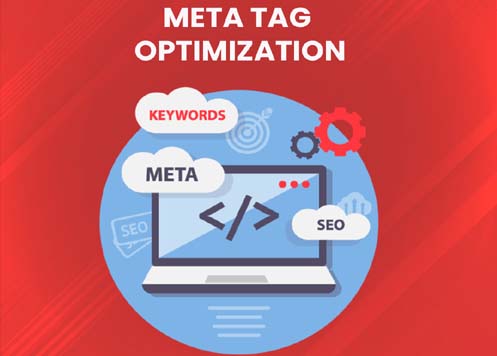
Meta Tag Optimization
Meta tags are little code bits located in the beginning of a website’s HTML structure. They are there to offer information about the website’s content to both search engines and anyone who visits.
While these Meta tags aren’t directly visible when you browse the website, search engines can see them and use them as guides to understand the main themes of the page.
Read More
Importance Of Meta Tags
Meta tags play a key role in SEO because they give search engines a snapshot of a web page’s content. These tags include things like the title of the page, its description, and the primary keywords. Both search engines and people use this information to get a quick idea of the page’s topic. By effectively using meta tags, a webpage can rank higher in search engine results pages (SERPs), potentially bringing more visitors to the site.
How Do We Write Meta Tags That Are SEO-Friendly?
To create Meta Tags optimized for SEO, consider these suggestions:
- Choose distinct and clear titles: Ensure your page title is short, one-of-a-kind, and matches the page’s content. Include the main keyword and keep it under 60 characters.
- Pen an engaging meta description: Sum up the page’s content briefly in the meta description. Incorporate the main keyword, stay within 155 characters, and make it compelling so people want to visit the site.
- Pick relevant keywords: Add suitable keywords in the title and description tags. Make sure they align with the page’s content and feel natural.
- Steer clear of repeating meta tags: Make sure each website page has its own meta tags, so there’s no repetition. This helps search engines differentiate and rank each page better.
- Implement schema data: Schema is a specific data type that gives search engines extra information about a page’s content. It’s useful for adding details like ratings, prices and product feedback.
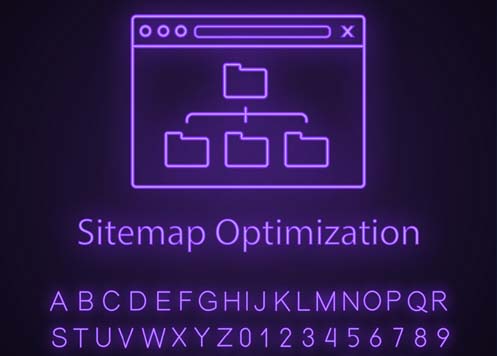
Sitemap Optimization
A sitemap is like a map of a website, showing all its pages and details about them. It helps search engines like Google understand and find all the parts of a website. Sitemaps can be in different forms like HTML, XML, or TXT. Giving a sitemap to search engines helps them know how a website is laid out.
Sitemaps can share more about a page, like when it was last changed, how often it’s updated, and its importance compared to other pages. This extra information guides search engines on which pages to look at and how often.
Read More
Besides aiding search engines, HTML sitemaps help people visiting the website too. They offer an easy way to move around the site. Some sites even put a link to their sitemap at the bottom or in their menu for easy reach by visitors.
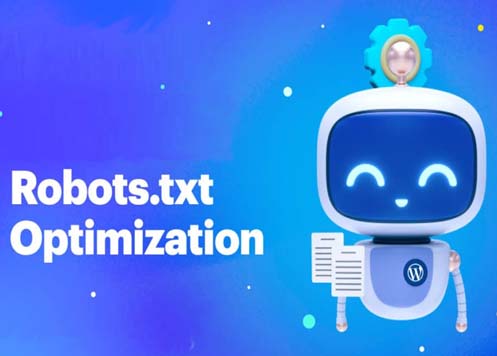
Optimization of the Robots File
Read More
How Do We Optimize Your Robots.Txt File?
- Have a robots.txt file: Start by ensuring your website has this robots.txt file. Without it, search engine crawlers might go through every page, even one that you would like them to skip or not to be indexed.
- Specify pages crawler should visit: Use the “Disallow” rule to mark pages or areas the crawlers shouldn’t explore. This can be places with low-quality content, duplicate content or things not matching your site’s main theme. Say, if there’s a private “admin” section, and you may want to to disallow crawlers from accessing it.
- Allow access to important pages: Ensure your robots.txt file directs crawlers to the must-see pages. Using the “Allow” rule, you can guide them to main spots like your homepage, items for sale, or blog posts.
- Use wildcards: Use wildcards to point directories or a pattern of pages that should be allowed or disallowed. For instance, you can use the “*” wildcard to set rules for a bunch of pages at once, based on shared features or keywords.
- Check the robots.txt file: Always test the robots.txt using tools like Google Search Console or any other testing tool to confirm it’s set up right and crawlers can see the vital parts of your site.
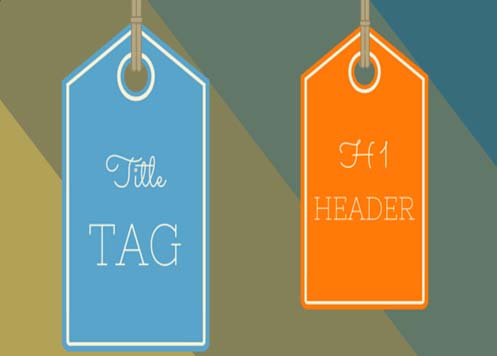
Heading Tag Optimization
Read More
This is How We Improve Your Website’s Performance
Headings for Improved Search Rankings– Use Primary Heading with H1 Tag: Always use the H1 tag for the central title of your webpage. This tag should incorporate the primary keyword your page focuses on. By doing this, search engines can better determine the central theme of your page, potentially improving its search ranking.– Use Subheadings from H2 to H6: When breaking down your content, begin with the H2 tag for your first secondary title. Following sections can adopt H3, H4, and so forth, descending in terms of their significance. Organizing your content this way not only makes it reader-friendly but also allows search engines to differentiate and understand the significance of each section.– Clear and Direct Headings: Aim to make your headings straight to the point and reflective of the content they introduce. While it’s beneficial to sprinkle in some relevant keywords, it’s crucial that these headings aren’t overly general, but instead offer a genuine snapshot of the content they lead into.– Use CSS for Heading Styles: Instead of merely enlarging the text to indicate a heading, it’s wiser to utilize CSS for their design and style. This strategy ensures that headings retain a uniform appearance throughout, and it sidesteps potential issues, especially concerning mobile device compatibility and user accessibility.– Avoid overusing Headings: While effective use of headings can amplify both the look and SEO score of your webpage, excessive use can backfire. It’s key to strike a balance. Specifically, multiple H1 tags on a single page is a no-go. Instead, use headings judiciously, ensuring each serves a clear purpose.In simple terms, optimizing a robots.txt file boosts a website’s visibility on search engines by stopping them from viewing unnecessary or private pages, but letting them see the vital ones.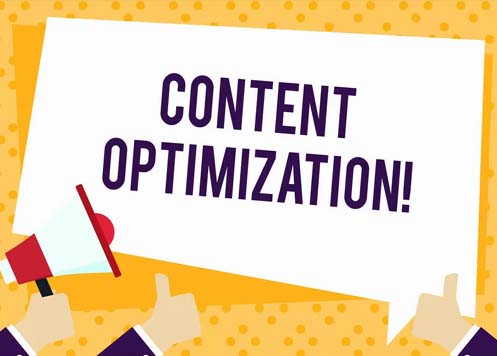
Content Optimization
Content optimization involves making adjustments to website content to improve its
presence in search engine results pages (SERPs), ultimately aiming to draw a larger audience
to the site.
How do we optimize your website’s content for
improved SEO?
Read More
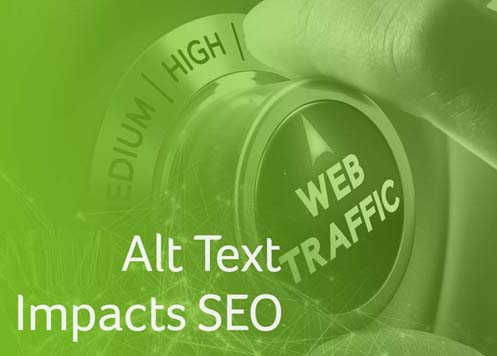
Alt Text Optimization
Alt text is a written description attached to images on websites, telling people and search engines what the picture is about. This description is not just important for SEO, ensuring search engines understand the picture’s content, but it also makes the website easier to use for those with vision challenges, helping them understand the image context.
How We Optimize Your Images for Improved SEO
Read More
Strategically Use Relevant Keywords: When drafting the alt text, integrate relevant keywords that give insight into the image’s content. This boosts clarity and relevance. However, it’s crucial to strike a balance and not overpopulate the text with keywords, which can seem forced or artificial.
- Ensure Contextual Relevance: Every image on a webpage serves a purpose, and its alt text should mirror the broader context of the site. Avoid resorting to generic or irrelevant descriptions that fail to capture the image’s significance within the broader webpage narrative.
- Never Overlook Alt Text: Always ensure every image, irrespective of its role (be it decorative or functional), has associated alt text. Neglecting this step can compromise the user experience, especially for those relying on assistive webpage or technologies.
- Maintain Formatting Consistency: Beyond the content, the way it’s presented matters. Abide by standard formatting guidelines, leveraging appropriate capitalization and punctuation. This not only enhances the aesthetic but also ensures the alt text is easy to read and interpret.
To sum it up, optimizing alt text boosts a webpage’s search ranking and user-friendliness. Describe images briefly yet accurately, add relevant keywords, consider the overall page context, always provide text, and format it correctly.

Alt Text Optimization
Alt text is a written description attached to images on websites, telling people and search engines what the picture is about. This description is not just important for SEO, ensuring search engines understand the picture’s content, but it also makes the website easier to use for those with vision challenges, helping them understand the image context.
How We Optimize Your Images for Improved SEO
Read More
Strategically Use Relevant Keywords: When drafting the alt text, integrate relevant keywords that give insight into the image’s content. This boosts clarity and relevance. However, it’s crucial to strike a balance and not overpopulate the text with keywords, which can seem forced or artificial.
- Ensure Contextual Relevance: Every image on a webpage serves a purpose, and its alt text should mirror the broader context of the site. Avoid resorting to generic or irrelevant descriptions that fail to capture the image’s significance within the broader webpage narrative.
- Never Overlook Alt Text: Always ensure every image, irrespective of its role (be it decorative or functional), has associated alt text. Neglecting this step can compromise the user experience, especially for those relying on assistive webpage or technologies.
- Maintain Formatting Consistency: Beyond the content, the way it’s presented matters. Abide by standard formatting guidelines, leveraging appropriate capitalization and punctuation. This not only enhances the aesthetic but also ensures the alt text is easy to read and interpret.
To sum it up, optimizing alt text boosts a webpage’s search ranking and user-friendliness. Describe images briefly yet accurately, add relevant keywords, consider the overall page context, always provide text, and format it correctly.
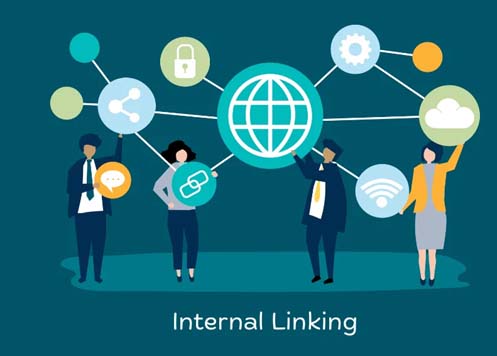
Internal Linking Optimization
Internal linking involves practice of linking pages within the same website. This practice holds significance in SEO for various reasons:
Helps search engines in crawling and indexing webpages: Internal linking provides a roadmap for search engines to more effectively understanding a website’s organizational structure and hierarchy. When search engines engage in scanning or “crawling” a particular page, they utilize the internal links as pathways, guiding them to other interconnected pages within the same site.
Read More
This process is instrumental in allowing them to identify and index new content and pages.
– Improves Website Navigation and User Experience: With internal linking, visitors find it easier to explore a website and locate relevant information. Offering links to interconnected content keeps users engaged, making them spend more time on the site, thereby elevating their overall experience.
– Shares Link Value Across Pages: The concept of link equity is the value a webpage transfers to another via a link. Through internal linking, this value can be spread across a site. This not only amplifies the potential for pages to rank better but also uplifts the site’s overall authority.
– Strengthens Keyword Context: By internally linking pages that share thematic connections, a website emphasizes keyword significance. Connecting pages with associated keywords allows search engines to get a clearer picture of the website’s central themes.
– Improves Individual Page Authority: The act of internal linking can lift the prominence of specific pages. When a less authoritative page is linked to one with high authority, it can inherit some of that strength, increasing its chances to rank higher.
In SEO, internal linking plays a crucial role in improving website structure, helping in navigation, increasing user experience, sharing link value, emphasizing keyword context, and improving the authority of pages. By interconnecting pages on the same site, you can strengthen both the visibility of individual pages in search results and the overarching authority of the entire website.
Do You Want To Talk To Our Experts About Your Project?
Share Your Project Details By Clicking On ‘Request Proposal’, And Expect a Call From Our Team Soon!
How Do We Optimize Websites To Achieve Higher On-Page SEO Ratings?
For a better on-page SEO score, prioritizing the needs and preferences of the audience is essential. We begin by conducting keyword research, pinpointing the most relevant and sought-after keywords for our website. This allows us to craft content that resonates with our intended audience, increasing the chance they’ll discover and interact with your website.
After specifying the keywords, we focus on optimizing the website’s meta tags and overall content. We employ title tags and meta descriptions to clarify the site’s purpose and the content it offers. Our aim is to ensure that the content is high-quality, captivating, and keyword-optimized by integrating headings, adding alt text to visuals, and presenting your content in a reader-friendly manner.
On-page SEO also deeply intertwines with technical elements. We optimize a website’s loading speed through tactics like image compression, code streamlining, and activating caching, all to deliver a swift and seamless user experience. Given the rising mobile web access trend, we ensure your site is both mobile-compatible and straightforward to explore. You might also be interested in our technical SEO offerings.
Moreover, we employ tools such as Google Analytics and Search Console to oversee website performance. This equips us to spot improvement areas and take informed actions, continuously optimizing the site for superior on-page SEO.
In essence, achieving a strong on-page SEO score depends on a user-centric approach. By emphasizing the relevant keywords, generating top-notch content, focusing on technical aspects, and regularly reviewing website performance, we aim to draw more visitors and improve your site’s position in search engine results pages (SERPs).
Why is On-Page SEO Important?
On-Page SEO stands as a important element in any SEO approach. It involves optimizing individual web pages to achieve higher ranking on search engine results pages (SERPs) and draw more organic visitors.
Several factors underscore the significance of On-Page SEO for modern businesses. For one, it helps in carving out a trustworthy and authoritative presence within a specific field or market. When executed rightly, On-Page tactics relay to search engines that a website furnishes high quality, relevant content for certain keywords. This build trust with both online visitors and search engines, which over time can culminate in higher rankings and increased traffic flow.
Furthermore, On-Page SEO offers businesses a competitive edge, enabling even smaller entities to compete with bigger corporations in fiercely contested sectors.
Why Obiyan Infotech For Best On-Page SEO Services?
If you are in the looking for best on-page SEO services, Obiyan Infotech is your destination. Numerous businesses face challenges in online visibility due to inadequate optimization strategies. Yet, with our expert team at your service, your website’s high position in search engine rankings is guaranteed.
At Obiyan Infotech, we understand the important role of on-page SEO for a website’s performance. Using state-of-the-art tools, we meticulously analyze your website’s every aspects, from its framework, content, and meta tags to images, headings, titles, and more. From this in-depth analysis, we devise a tailored strategy that pinpoints and addresses the gaps hindering higher ranking in search engine results.
Partnering with Obiyan Infotech for on-page SEO services in India assures you a top-notch experience, marked by complete transparency at each step. Our holistic SEO offerings encompass optimizing your website’s content, meta descriptions, tags, and the web of internal links. All these components are integral in determining your position on search engine results pages (SERP).
Our on-page SEO experts employ only the latest and most innovative methods to ensure client satisfaction. Engaging deeply with our clientele, we understand their specific requirements and goals, subsequently develop a results-oriented effective strategy.
We offer best SEO services at an affordable prices. Explore our all-inclusive SEO Packages, which integrate off-page SEO services and content marketing tactics, increasing the chances of better results in your SEO campaign.
FAQs About SEO Services
On-page SEO entails optimizing each web page to achieve higher rankings and attract more relevant traffic from search engines. This process includes optimizing elements like meta tags, headings, content, internal links, images and the URL structure to increase visibility on search engine platforms.
Important components of on-page SEO include meta tags optimization, optimized headings and subheadings, high quality and relevant content, keyword research and analysis, image optimization, internal linking, mobile-friendliness, user-friendly URL structure, page load speed and correctly implementing schema markup.
On-page SEO aims around optimizing specific pages within a website, while off-page SEO deals with optimizing external elements like backlinks, social media activity, and other aspects not directly related to the website itself.
For effective on-page SEO, it’s advised to perform detailed keyword analysis, optimize meta tags, use descriptive and optimized headings, create high quality relevant contents, optimize images, use internal links, improve page loading time, and use mobile-friendly designs.
On-page SEO is important as it helps search engines in understanding the content and the relevance of web pages, leading them to achieve higher rankings on search engine results pages (SERPs). By optimizing on-page components, websites can improve their visibility on search engines, draw more relevant visitors, and increased user interaction and conversions.
